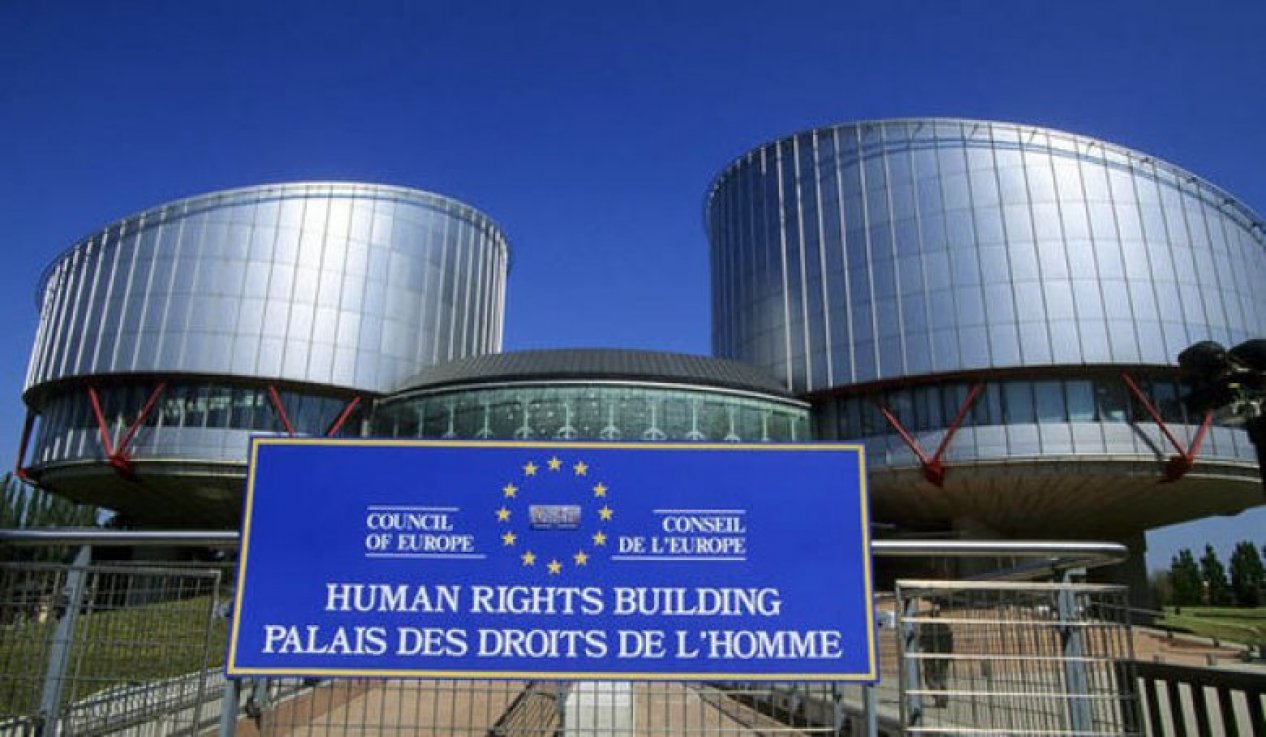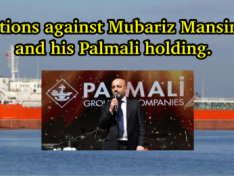
The European Court of Human Rights is considering a claim on Turkey’s participation in the Karabakh war, Armenia’s representative to the ECHR Yeghishe Kirakosyan said in parliament. He presented to the parliament a draft decision envisaging the expansion of the powers of the representative of Armenia to the ECHR, as he protects the interests of the country in other international instances. “We have a complaint against Turkey submitted to the ECHR on May 9, it concerns the direct involvement in the 44-day war, as well as the collection, financing and transfer of mercenaries. That is, facts were presented,” Kirakosyan said.
The complaint is in court, it is being discussed which chamber the issue will be referred to.
Faktyoxla Lab. has tried to figure out how justified such accusations of the Armenian side are.
Armenia on September 16 initiated a trial against Azerbaijan in the International Court of Justice on the basis of violation of the provisions of the International Convention on the Elimination of All Forms of Racial Discrimination. Yeghishe Kirakosyan also represents Armenia in this process.
Back then, Yerevan asked the court to introduce temporary interim measures against Baku in accordance with the International Convention on the Elimination of All Forms of Racial Discrimination. Yerevan’s statement contains examples of allegedly racist and hate speech by Azerbaijani officials against Armenians, as well as atrocities committed during and after the war. The lawsuit also contained a demand for the return of all Armenian prisoners.
And how did it all end?
First, the UN International Court of Justice didn’t satisfy the main claim of the Republic of Armenia against Azerbaijan “for the immediate return of prisoners of war.” That is, Armenia, which tried, using the term “prisoners of war,” to convince the world community that this was really so, lost. These are the terrorists detained by Azerbaijan, who entered its territory after the end of hostilities and the signing of the Trilateral Statement of November 9/10, 2020 and who committed terrorist attacks, crimes, as a result of which the citizens of Azerbaijan were killed. It is impossible to call them “prisoners of war”, even if they were in the military service in the Republic of Armenia.
Secondly, the Court rejected Armenia’s claim regarding the War Trophy Park in Baku. There are many military history museums in the world. They include military history museums of Egypt, Vietnam, Cuba, the UK, France, the Netherlands, Belgium, Serbia and other countries of the world. Various weapons and military equipment seized by the Russian military during the local conflict in Syria are currently on display in the Patriot Park in Moscow. Among the exhibits on display are dummies depicting Syrian militants. The military patriotic mobile exhibition Syrian Fracture, organized by the Russian Ministry of Defense, was open to visitors from February 23 to April 27, 2019 in about 60 cities of Russia.
The repeated hysteria of the Armenian Foreign Ministry regarding the opening of the War Trophy Park in Baku and the demonstration of Armenian equipment there, captured as trophies and destroyed during the 44-day Patriotic War, shows that the attempts of this country to denigrate Azerbaijan have no end. This is how the Azerbaijani Foreign Ministry commented on one of the statements of the Armenian Foreign Ministry.
Thirdly, Armenia’s demand to investigate certain war crimes wasn’t satisfied, either. The refusal to satisfy the claim of Armenians on all these issues is because the Azerbaijani side timely submitted evidence to the court. At the same time, the International Court of Justice stated that the Republic of Armenia was unable to provide substantiated evidence on a number of issues.
Also noteworthy is the decision of the International Court of Justice to oblige Yerevan to prevent the activities of persons inciting hatred towards Azerbaijan, revanchist sentiments, national and ethnic hatred and discord in Armenia. The court ordered Armenia to take urgent measures against groups and individuals who voice violent calls on ethnic grounds, etc.
In short, the trial against Azerbaijan in the UN International Court of Justice, initiated by Armenia, failed.
As for the claim to the European Court of Human Rights about Turkey’s participation in the Karabakh war, as well as the collection, financing and transfer of mercenaries, everything isn’t clear there, either.
The topic of recruiting foreign mercenaries from Azerbaijan with the help of Turkey began to be discussed in the Armenian and Russian media even before the start of the Second Karabakh War. A certain Syrian of Armenian origin Kevork Almasyan was the first to report on the “Syrian mercenaries of Azerbaijan” on September 21, 2020 on his Twitter page.
At the same time, he didn’t refer to any reliable source, but this wasn’t taken into account, and Almasyan’s fake news was immediately distributed. On the same day, Lindsey Snell, posing as an investigative journalist, with reference to Almasyan, said that the Turkish-backed Syrian National Army is sent to Karabakh, and then posted a photo that allegedly captured the soldiers of the Hamza division, as if heading to Baku.
The Guardian, The Times, Reuters, the Wall Street Journal and BBC reported about alleged mercenaries in Azerbaijan based on unverified tweets. Moreover, everyone used a similar method, which leads to certain thoughts. Thus, the Wall Street Journal in its report uses information from unnamed sources in Karabakh, ‘obtained through the messenger.’ Both sources speak in almost the same words. The Caspian and Black Sea Analysis Foundation think tank based in Bulgaria conducted research and found that Snell’s tweet served as the primary source for subsequent fake publications.
The information disseminated wasn’t verified by anyone, and apparently no one worried about its reliability. Thus, pictures of the Syrian mercenaries who allegedly ‘fought for Azerbaijan’ were published. So, one of those ‘killed in Karabakh’ - Sardar Temelli, was identified by his uncle Abdurrahman Temelli, who wrote with indignation on social networks that his nephew, whose photo was disseminated by the officials of the Armenian Defense Ministry, actually was killed during the Turkish operation ‘Tiger Claw’ on the territory of Iraq.
The Russian side also rendered great assistance to the Armenian propaganda on the issue of mercenaries. In particular, Foreign Minister Sergei Lavrov said at the height of hostilities that almost 2,000 foreign mercenaries are in the zone of the Armenia-Azerbaijan conflict in Nagorno-Karabakh. At the same time, neither he nor other officials and experts, raising this issue, have ever indicated who the Syrian mercenaries are fighting for, giving room for the fantasies of the Armenian side.
Meanwhile, Baku at the beginning of November last year handed over to Moscow a detailed list of mercenaries who fought in Karabakh on the Armenian side. In contrast to the unsubstantiated statements of Armenian and Russian sources, Azerbaijan provided detailed information, including the names and surnames, as well as the names of the relevant terrorist organizations.
At that time, the Armenians didn’t succeed in connecting Europe to the slanderous campaign. Everyone is well aware of the answer of Chairman of the Committee of Ministers of the Council of Europe, Foreign Minister of Germany Heiko Maas to the relevant question of the Armenian journalist during the winter session of PACE: “You say that Azerbaijan used foreign mercenaries in hostilities in Nagorno-Karabakh? So far, no evidence has been found.”
At the same time, it was reported that Yerevan had deployed up to 300 militants of the Syrian wing of the PKK in the occupied territories of Azerbaijan. According to Anadolu sources, a corresponding agreement between Yerevan and the PKK was reached at the end of July last year. As part of the agreement, about 300 militants arrived by bus to Armenia and the occupied Nagorno-Karabakh. Here, the PKK/PDU (People’s Defense Units) terrorists conducted a training course for the separatists, who were then actively involved in the shelling of Azerbaijani settlements.
It was planned that after participating in the battles in Nagorno-Karabakh, Kurdish militants will receive in gratitude the support of Yerevan in terrorist activities in northern Iraq, covering the shortage of manpower at the expense of women and adolescents from Armenia. The field commander of the female structure of the PKK, Lajika Gultekin, told one of the group’s publications that they went to Karabakh to fight along with the Armenian military. “We will always be with the Armenian people if they wish,” Gultekin said.
Meanwhile, the Azerbaijani side has solid evidence of Armenia’s involvement of foreign mercenaries in the war in Karabakh. This process began long before the second Karabakh war. Mercenaries were attracted by Armenia mainly from France, Canada, Lebanon, Spain, Greece and other countries. This is evidenced by foreign passports found on mercenaries killed during the fighting. Thus, the passports of Greek citizen Aren Osipov, Spanish citizen Armen Knyazyan, French citizen Arthur Hovhannisyan, Canadian citizen Christopher Artin, Lebanese citizen Gevorg Hajiyan, Syrian citizen Stepan Keshishyan and many other extremist mercenaries were found.
During the days of the war, the Azerbaijani special services published an audio recording of the radio interception, which contained the talks of foreign mercenaries fighting on the Armenian side. The State Security Service of Azerbaijan reported that it intercepted the radio communications of mercenaries from the Kurdistan Workers’ Party brought to Karabakh from Syria and Iraq.
As for Turkey itself, the officials of this country have repeatedly stated that Turkey has always been and will be next to Azerbaijan.
As Azerbaijani President Ilham Aliyev noted in an interview, “By being next to us, Turkey sent a message to the whole world – do not interfere. Azerbaijan is on the right track, and if you intervene, you will have to deal with Turkey. Of course, this was a tremendous advantage.”
Considering the above-mentioned facts, Faktyoxla Lab. comes to the conclusion that Armenia’s complaint against Turkey to the ECHR is futile and will result in nothing.




















